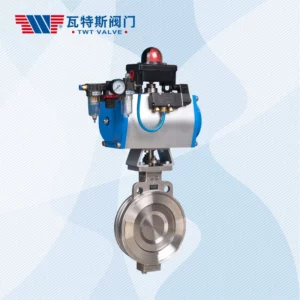Selecting the right size and material for a PN16 butterfly valve is an important step in ensuring proper performance and longevity of the valve.
Here are some factors to consider when selecting a PN16 butterfly valve:
Size: The size of the valve should be based on the diameter of the pipe it will be installed in. The valve size should match the pipe size to ensure proper flow control and prevent any restrictions or obstructions. It’s important to measure the pipe diameter accurately to select the correct valve size.
Material: The material of the valve should be selected based on the type of fluid being transported through the pipe. For example, if the fluid is corrosive or abrasive, a valve made from corrosion-resistant materials such as stainless steel or PVC may be necessary. Similarly, if the fluid is at an extreme temperature, a valve made from materials that can withstand high temperatures may be required.
Pressure rating: As mentioned, a PN16 butterfly valve is rated for a maximum pressure of 16 bar (or approximately 232 psi). It’s important to ensure that the valve is selected based on the maximum pressure of the fluid being transported through the pipe. If the pressure exceeds the valve’s rating, it may result in valve failure or damage.
Application: The specific application of the valve should be considered when selecting the size and material. For example, if the valve will be used in a high-traffic area, a valve made from more durable materials may be necessary to withstand the wear and tear. Similarly, if the valve will be used in a sensitive application, such as in the food or pharmaceutical industry, pn16 butterfly valve a valve made from materials that meet certain standards, such as FDA or USP Class VI, may be required.
When selecting a PN16 butterfly valve, it’s important to consult with a qualified valve supplier or engineer who can assist with selecting the appropriate size and material based on the specific requirements of your application.
How do I determine the maximum pressure of the fluid being transported through the pipe?
Determining the maximum pressure of the fluid being transported through the pipe is an important step in selecting the appropriate valve for your application.
Here are some steps to help determine the maximum pressure:
Consult the system design specifications: The system design specifications should provide information on the maximum pressure of the fluid being transported through the pipe. This information should be available from the system designer or manufacturer.
Check the pressure gauge: If a pressure gauge is installed in the system, check the gauge to determine the current pressure. If the gauge is not installed, consider installing one to monitor the pressure.
Calculate the pressure: If the pressure information is not available from the system design specifications or the pressure gauge, you can calculate the pressure using the following formula:
Pressure (P) = Force (F) / Area (A)
Where:
Force (F) is the force exerted by the fluid on the surface of the pipe
Area (A) is the cross-sectional area of the pipe
To calculate the force, consider the mass flow rate of the fluid and the velocity of the fluid through the pipe. To calculate the area, measure the inside diameter of the pipe and calculate the cross-sectional area.
Consider the operating conditions: In addition to the maximum pressure, it’s important to consider the operating conditions of the system, including any pressure spikes or fluctuations that may occur. This can help ensure that the valve is selected with an appropriate safety margin to prevent valve failure or damage.
When selecting a valve based on the maximum pressure of the fluid being transported through the pipe, it’s important to consult with a qualified valve supplier or engineer who can assist with selecting the appropriate valve based on the specific requirements of your application.
